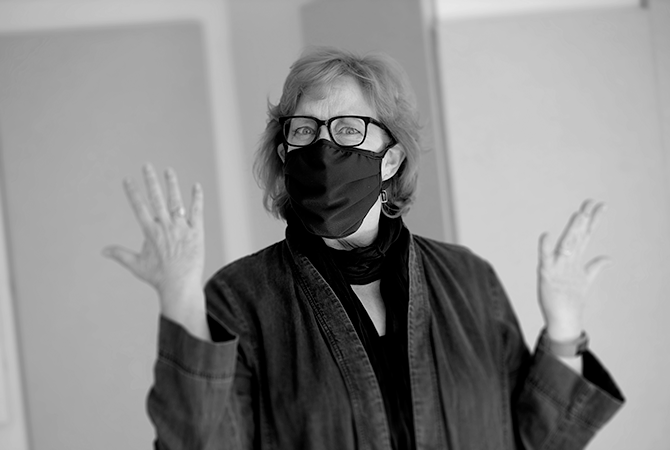Speak louder, shout if you have to—that’s how Kristin Rice has been communicating with others, particularly while outdoors with half of her face covered by a mask.
“In a crowded area, you are shouting to be heard, to be as loud as possible while social distancing,” said the Virginia Tech freshman, who plays the alto saxophone with the Marching Virginians. “It’s a struggle.”
Along with other band members, Rice cut a hole in her mask in order to play her instrument.
“We have to slow down our speech. We have to articulate more clearly and use more pitch variety. I have to remember that they can't see that really effective part of my face. i have to let myself exaggerate.”
Patty Raun,
a professor in the School of Performing Arts
Meanwhile, Michael Dashiell, a Virginia Tech sophomore, has figured out a trick to prevent his glasses from fogging up while he’s wearing a face mask. He pushes his glasses further down on his nose, so that they rest on top of his mask.
Face coverings now are a part of our daily apparel. Just like people put on clothes every day before venturing out in public, masks are a part of the recommended dress code to slow the spread of COVID-19. Throughout the commonwealth and across Virginia Tech’s campuses, face coverings are required indoors and outdoors when physical distancing isn’t possible.
But with only the eyes and forehead visible behind a face covering, communication can be tricky.
“It [communicating] requires a lot more consciousness of our bodies and our eyes when we are out in public wearing a mask,” said Patty Raun, a professor in the School of Performing Arts at Virginia Tech and director of the Center for Communicating Science. “We need to overcompensate for the most expressive part of the face.”
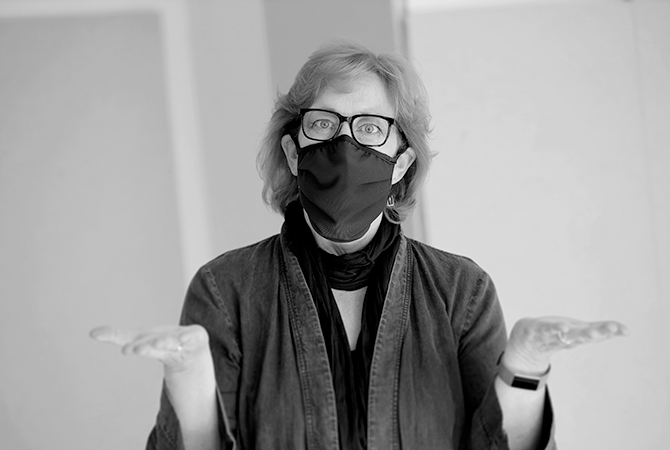
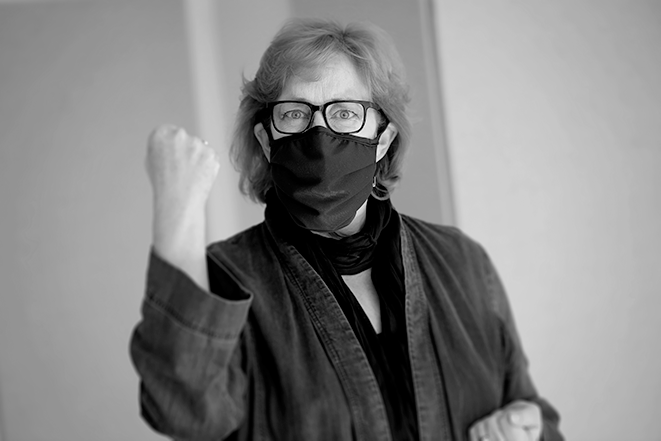

For example, on a recent trip to a local restaurant to pick up a to-go food order, Raun said she found herself exaggerating her signals with the staff. She spoke slowly and pointed to items on the menu, all while her eyebrows were rising up and down.
That’s because her mask covered her nose and mouth, forcing her to figure out how to give her order without using her typical facial expressions.
“We have to slow down our speech. We have to articulate more clearly and use more pitch variety,” said Raun. “I have to remember that they can’t see that really effective part of my face. I have to let myself exaggerate.”
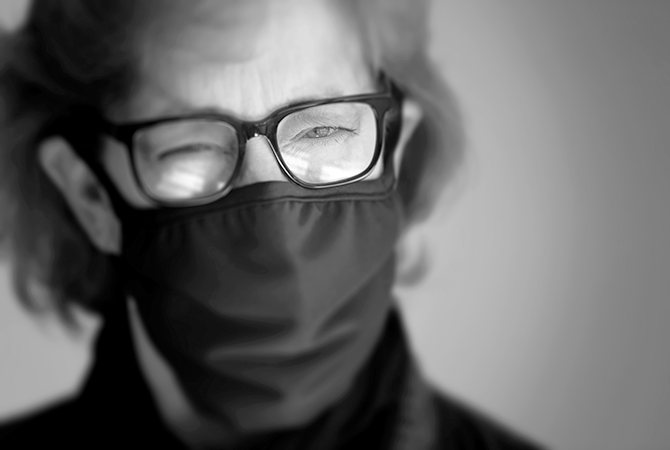

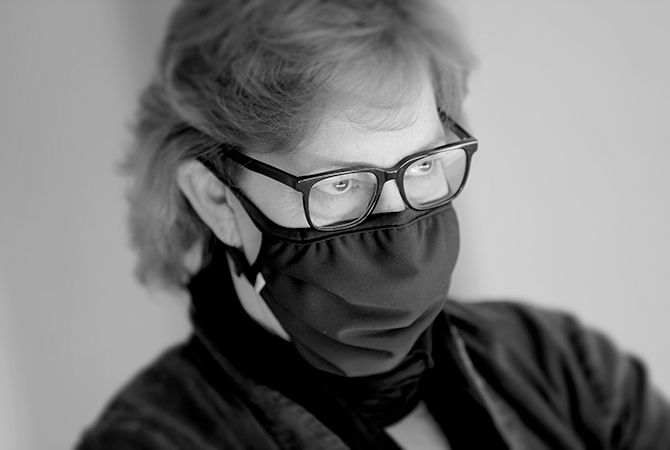



Aside from speaking, nonverbal body language is just as important in communicating with others, and movement of the torso is key, said Greg Justice, an associate professor in the School of Performing Arts at Virginia Tech. That includes everything from posture to orientation of the body.
After all, 50 percent of effective communication happens through body language and nonverbal methods, he said. Meanwhile, 40 percent of communication is vocal, and only about 10 percent happens with words.
“We can lie like crazy with our face, but we can’t lie with our torso,” Justice said.
Another challenge is showing genuine friendliness behind a mask. Raun said she wants people in public to know that she is smiling at them, even though they can’t see her mouth. Looking at someone’s eyes and their forehead can give clues as to whether they are smiling or frowning, she said. To show anger, the eyes typically are lowered or pinched together.
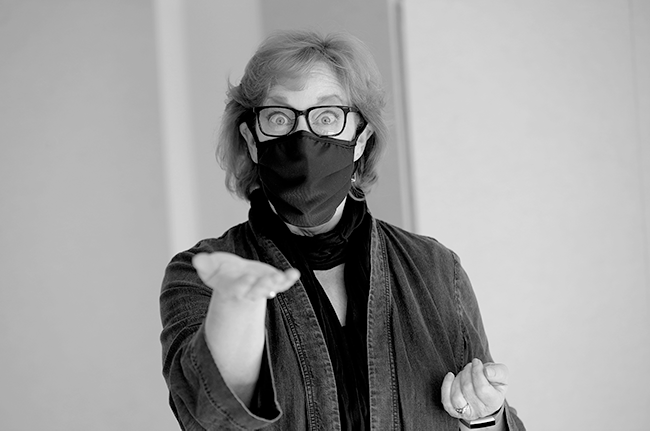
How To Communicate Best Behind A Face Mask:
• Enunciate Your Words.
• Speak Louder.
• Use Hand Signals.
• Exaggerate.
• Be Aware Of Body Language.
• Make Eye Contact.
• Study The Eyes.
• Change The Pitch Of Your Voice.
But the skin around the eyes moves when someone is genuinely smiling. Look for crow’s feet at the corner of people’s eyes or squinting to see a smile, she said.
“Joy is very clear in the eyes,” said Raun, explaining that she uses eye and mind exercises for students in her acting classes. “You can see so much from that little two inches.”
She said she particularly likes the masks that have a smile printed on them.
Making eye contact is especially critical while wearing a face covering, as well as changing the tone and pitch of one’s voice to convey a message, said Robin Panneton, an associate professor of psychology at Virginia Tech. Her research focuses on infants’ and toddlers’ attention to and perceptions of language.
“We might need to be more mindful of how important the body is in how we convey our enthusiasm and our skepticism,” Panneton said.
But masks aren’t the only obstacle affecting our current communications with co-workers, family, and friends.
There’s another challenge created by the pandemic—communicating behind screens. This applies to Zoom and other web platforms that people now use regularly for office meetings, group events, and even social gatherings in order to maintain physical distance.
For onscreen communication, people should remember that the camera is their friend, said Justice.
For instance, when talking with others online, we often want to look at the people on the screen, rather than directly at the camera. But Justice advises people to look at the camera,which is typically located at the top of the display; otherwise, they appear to be looking down at the others on the screen.
“The speaker must behave like that glass is actually the person(s) they are talking to,” said Justice, who suggests attaching a sticky note just above the camera that states “Look here” in order to train the eyes.
To be sure, communicating with others well right now takes more effort, intense attention, and some creativity, Raun said, calling it a “paradox of the times.”
“When we are on Zoom or video communication, our nonverbals are limited to head and shoulders,” she said. “We’ve got one kind of limitation through part of our day, then we go out in public and we have the opposite problem.”
Even more so in public, “we need to be very intentional about remembering that there is a human being behind that mask, that there’s a person with a lot of life things going on,” Raun said. JKB
Online classes, Zoom meetings, face coverings and social distancing can create challenges as we try to communicate with others. Patty Raun, a professor of performance and voice, discusses non-verbal cues and other helpful hints to improve communication.
